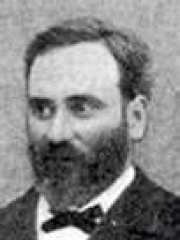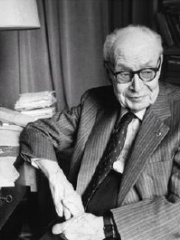
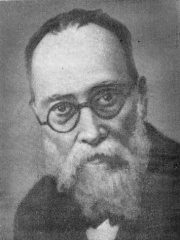
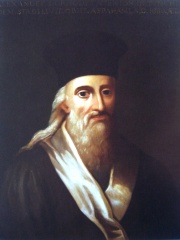

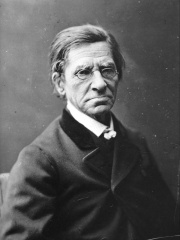
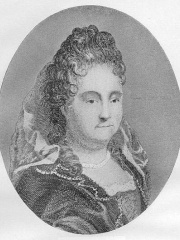
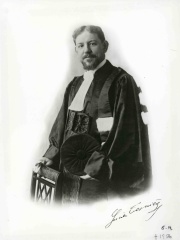
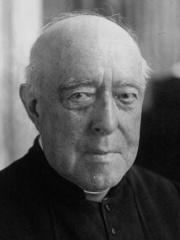
The Most Famous
LINGUISTS from France
This page contains a list of the greatest French Linguists. The pantheon dataset contains 214 Linguists, 12 of which were born in France. This makes France the birth place of the 5th most number of Linguists behind United Kingdom, and Russia.
Top 10
The following people are considered by Pantheon to be the top 10 most legendary French Linguists of all time. This list of famous French Linguists is sorted by HPI (Historical Popularity Index), a metric that aggregates information on a biography's online popularity. Visit the rankings page to view the entire list of French Linguists.

1. Georges Dumézil (1898 - 1986)
With an HPI of 70.95, Georges Dumézil is the most famous French Linguist. His biography has been translated into 44 different languages on wikipedia.
Georges Edmond Raoul Dumézil (French: [dymezil]; 4 March 1898 – 11 October 1986) was a French philologist, linguist, and religious studies scholar who specialized in comparative linguistics and mythology. He was a professor at Istanbul University, École pratique des hautes études and the Collège de France, and a member of the Académie Française. Dumézil is well known for his formulation of the trifunctional hypothesis on Proto-Indo-European mythology and society. His research has had a major influence on the fields of comparative mythology and Indo-European studies. In the 1930s he was a supporter (though not a formal member) of the far-right group Action Française, leading to criticism from left-wing scholars in the 1980s and afterwards.

2. Antoine Meillet (1866 - 1936)
With an HPI of 70.24, Antoine Meillet is the 2nd most famous French Linguist. His biography has been translated into 38 different languages.
Paul Jules Antoine Meillet (French: [ɑ̃twan mɛjɛ]; 11 November 1866 – 21 September 1936) was one of the most important French linguists of the early 20th century. He began his studies at the Sorbonne University, where he was influenced by Michel Bréal, the Swiss linguist Ferdinand de Saussure, and the members of the L'Année sociologique. In 1890 he was part of a research trip to the Caucasus, where he studied the Armenian language. After his return, de Saussure had gone back to Geneva, so Meillet continued the series of lectures on comparative linguistics that de Saussure had given. In 1897 Meillet completed his doctorate, Research on the Use of the Genitive-Accusative in Old Slavonic. In 1902 he took a chair in Armenian at the Institut national des langues et civilisations orientales and took under his wing Hrachia Adjarian, who would become the founder of modern Armenian dialectology. In 1905 Meillet was elected to the Collège de France, where he taught on the history and structure of Indo-European languages. One of his most-quoted statements is that "anyone wishing to hear how Indo-Europeans spoke should come and listen to a Lithuanian peasant." He worked closely with linguists Paul Pelliot and Robert Gauthiot. Today Meillet is remembered as the mentor of an entire generation of linguists and philologists who would become central to French linguistics in the twentieth century, such as Émile Benveniste, Georges Dumézil, and André Martinet. In 1921, with the help of linguists Paul Boyer and André Mazon, he founded the Revue des études slaves.

3. Alexandre de Rhodes (1591 - 1660)
With an HPI of 66.14, Alexandre de Rhodes is the 3rd most famous French Linguist. His biography has been translated into 32 different languages.
Alexandre de Rhodes, SJ (French pronunciation: [alɛksɑ̃dʁ də ʁɔd]; 15 March 1593 – 5 November 1660), also Đắc Lộ, was an Avignonese Jesuit missionary and lexicographer who had a lasting impact on Christianity in Vietnam. He wrote the Dictionarium Annamiticum Lusitanum et Latinum, the first trilingual Vietnamese-Portuguese-Latin dictionary, published in Rome, in 1651.

4. André Martinet (1908 - 1999)
With an HPI of 65.71, André Martinet is the 4th most famous French Linguist. His biography has been translated into 27 different languages.
André Martinet (French: [ɑ̃.dʁe maʁ.ti.nɛ]; 12 April 1908 – 16 July 1999) was a French linguist, influential due to his work on structural linguistics. In linguistic theory, Martinet is known especially for his studies on linguistic economy and double articulation.
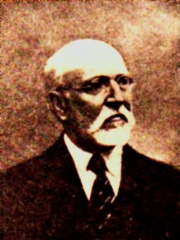
5. Louis de Beaufront (1855 - 1935)
With an HPI of 64.78, Louis de Beaufront is the 5th most famous French Linguist. His biography has been translated into 27 different languages.
Louis Chevreux (3 October 1855, Paris – 8 January 1935, Thézy-Glimont), commonly known as Louis de Beaufront, was a major influence in the development of Ido, an international auxiliary language. Beaufront was initially an advocate of Esperanto and was largely responsible for its early diffusion in western Europe as well as one of its first French proponents.

6. Émile Littré (1801 - 1881)
With an HPI of 61.94, Émile Littré is the 6th most famous French Linguist. His biography has been translated into 20 different languages.
Émile Maximilien Paul Littré (French: [emil maksimiljɛ̃ pɔl litʁe]; 1 February 1801 – 2 June 1881) was a French lexicographer, freemason and philosopher, best known for his Dictionnaire de la langue française, commonly called le Littré.

7. Anne Dacier (1645 - 1720)
With an HPI of 61.43, Anne Dacier is the 7th most famous French Linguist. Her biography has been translated into 21 different languages.
Anne Le Fèvre Dacier (French pronunciation: [an lə fɛvʁ dasje]; c. 1651 – 17 August 1720), better known during her lifetime as Madame Dacier ([madam dasje]), was a French scholar, translator, commentator and editor of the classics, including the Iliad and the Odyssey. She sought to champion ancient literature and used her great capabilities in Latin and Greek for this purpose as well as for her own financial support, producing a series of editions and translations from which she earned her living. She was the dedicatee of Gilles Ménage's Historia mulierum philosopharum, whose characterisation of her and of Anna Maria van Schurman was used to provide leading examples in treatises arguing for female education across the following centuries.

8. Lucien Tesnière (1893 - 1954)
With an HPI of 60.60, Lucien Tesnière is the 8th most famous French Linguist. His biography has been translated into 19 different languages.
Lucien Tesnière (French: [lysjɛ̃ tɛnjɛʁ]; May 13, 1893 – December 6, 1954) was a prominent and influential French linguist. He was born in Mont-Saint-Aignan on May 13, 1893. As a senior lecturer at the University of Strasbourg (1924) and later professor at the University of Montpellier (1937), he published many papers and books on Slavic languages. However, his importance in the history of linguistics is based mainly on his development of an approach to the syntax of natural languages that would become known as dependency grammar. He presented his theory in his book Éléments de syntaxe structurale (Elements of Structural Syntax), published posthumously in 1959. In the book he proposes a sophisticated formalization of syntactic structures, supported by many examples from a diversity of languages. Tesnière died in Montpellier on December 6, 1954. Many central concepts that the modern study of syntax takes for granted were developed and presented in Éléments. For instance, Tesnière developed the concept of valency in detail, and the primary distinction between arguments (actants) and adjuncts (circumstants, French circonstants), which most if not all theories of syntax now acknowledge and build on, was central to Tesnière's understanding. Tesnière also argued vehemently that syntax is autonomous from morphology and semantics, although his stance is different from generative grammar which takes syntax to be a separate module of the human faculty for language.

9. Louis Duchesne (1843 - 1922)
With an HPI of 58.33, Louis Duchesne is the 9th most famous French Linguist. His biography has been translated into 18 different languages.
Louis Marie Olivier Duchesne (French: [dyʃɛːn]; 13 September 1843 – 21 April 1922) was a French priest, philologist, teacher and a critical historian of Christianity and Roman Catholic liturgy and institutions.
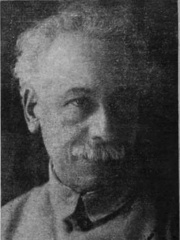
10. Sylvain Lévi (1863 - 1935)
With an HPI of 57.35, Sylvain Lévi is the 10th most famous French Linguist. His biography has been translated into 17 different languages.
Sylvain Lévi (French pronunciation: [silvɛ̃ levi]; March 28, 1863 – October 30, 1935) was an influential French intellectual and author whose specialities were oriental studies and India. He taught Sanskrit and Indian religions at the École pratique des hautes études in Paris, France. One of his notable students was Paul Pelliot. Lévi's book Théâtre Indien is an important work on the subject of Indian performance art, and Lévi also conducted some of the earliest analysis of Tokharian fragments discovered in Western China. Lévi exerted a significant influence on the life and thought of Marcel Mauss, the nephew of Émile Durkheim. Sylvain Lévi was a co-founder of the École française d'Extrême-Orient in Hanoi. According to the Universal Jewish Encyclopedia, Lévi was (one of the) founder(s) of the École française d'Extrême-Orient (EFEO) (French School of the Far East) in Hanoi. The École française d'Extrême-Orient's website notes that the school was founded in Hanoi in 1902. One of his students, Suzanne Karpelès, the first female member of EFEO, joined him there in 1922 and remained in French Indochina until 1941.
People
Pantheon has 12 people classified as French linguists born between 1591 and 1908. Of these 12, none of them are still alive today. The most famous deceased French linguists include Georges Dumézil, Antoine Meillet, and Alexandre de Rhodes.
Deceased French Linguists
Go to all RankingsGeorges Dumézil
1898 - 1986
HPI: 70.95
Antoine Meillet
1866 - 1936
HPI: 70.24
Alexandre de Rhodes
1591 - 1660
HPI: 66.14
André Martinet
1908 - 1999
HPI: 65.71
Louis de Beaufront
1855 - 1935
HPI: 64.78
Émile Littré
1801 - 1881
HPI: 61.94
Anne Dacier
1645 - 1720
HPI: 61.43
Lucien Tesnière
1893 - 1954
HPI: 60.60
Louis Duchesne
1843 - 1922
HPI: 58.33
Sylvain Lévi
1863 - 1935
HPI: 57.35
Gaston Waringhien
1901 - 1991
HPI: 56.47
Arsène Darmesteter
1846 - 1888
HPI: 55.80
Overlapping Lives
Which Linguists were alive at the same time? This visualization shows the lifespans of the 10 most globally memorable Linguists since 1700.


